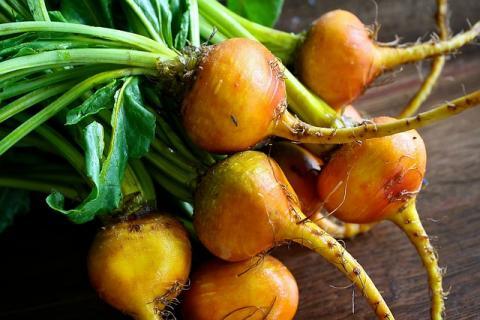
Slow living is deeply connected to the holistic wellness movement. It focuses on sustainable, local, organic, and whole ingredients, as well as taking the time to cook and enjoy each meal with the people we love. Instead of rushing to get our own five-minute dinner made before we’re on to the next thing, we come together to nourish our bodies and spirits. A slow living diet is equal parts delicious seasonal meals and telling stories about our day around the table.
Seasonal eating nourishes us because it is the lifestyle our bodies and minds are prepared to live. We might know that emotionally, but sometimes it’s difficult to hold onto when you still have the convenience of scooping up brightly-colored berries in the middle of December.
However, “feeling good” isn’t a catch phrase or marketing. It’s not yet another standard for us to live up to, and it shouldn’t feel like a chore.
Instead, it’s the bone-deep sense of pleasure which comes to us when we eat a meal rich in nutrients and history, and the feeling of genuine well-being (not the hype) which suffuses us afterward.
We feel better because we’re receiving all the nutrients we need in the way our bodies are best prepared to receive them.
1. We’re a part of the seasons, not separate from them.
Eating seasonally and locally isn’t a trend. Instead, it’s an ancient cycle of well-being we’re uniquely suited for, one which ties us to the seasons and the earth itself.
Root vegetables convert starch to sugar over winter to avoid being damaged by ice crystals, not because we find vegetable sugars delicious.
Of course, we do enjoy vegetable sugars. When we eat that root vegetable in comforting winter fare like a parsnip and turnip stew, our body uses that sugar as fuel in combination with all the nutrients and fiber packed in alongside the delectable vegetable sugars.
Not only does this satisfy our hunger, but the sweetness also satisfies cravings which would have been sated by fruits or berries in the summer. In this way, both we and our food sources have adapted together over millennia.
2. Slow Living Provides Sustenance For the Body and Mind
Here is a simple truth, one of the oldest we know: when we nourish ourselves, instead of just eating whatever is at hand, we feel better both mentally and physically.
When we are aware of the story behind our food, we savor it. We chew slowly enough that our saliva begins the process of digestion and eases the stress that fast-paced eating and processed foods put on our digestive system. When we eat food that has been given time to grow, we are given the full spectrum of nutrients available. When we eat naturally, slowly fermented food, we feed the microorganisms which are a vital part of the digestive process.
When we eat with people we care about, trading stories and embracing the universal feeling of pleasure that comes with sharing a meal, we wait longer between bites. We have the chance to recognize when we’re full, bringing the concept of satisfaction back to the dinner table.
This is how eating should work, and when we eat this way we are rewarded both physically and mentally.
3. A Case Study for Slow Living
-
Research indicates that up to 40 percent of Americans suffer from Vitamin D deficiency as the direct result of an industrialized, fast-paced life.
- Vitamin D deficiency can manifest as or contribute to raised blood pressure, mood disorders, multiple sclerosis, cancer, and more.
- Our indoor lives are spent away from the sun, which prevents our bodies from manufacturing this essential vitamin. Foods which are rich in vitamin D and vitamin D3 have been pushed aside in the move away from traditional styles of eating.
- Oily fish like sardines, fish roe, and oysters are now often seen as strange delicacies instead of staples to sustain us through the short days of winter.
- Other vitamin D-rich foods like eggs are shunned as “unhealthy” despite ample evidence that whole foods rich in cholesterol do not raise cholesterol levels.
- Instead of accepting our body’s judgment on our lifestyle and getting what we need through more sun exposure and eating the kind of food we need to survive properly, we try to make up for it through supplements.
It’s a vicious cycle and one which slow living aims to stop.
A Part Of, Not Apart From
The takeaway message from this is not that we should feel guilty about how we eat and live unless we’re living slowly.
Instead, we should accept where we’re starting from, but feel good about this return to a more natural way of living. As you settle into new routines, you’ll begin to feel energized by them, negating the stress of “making time” for this important part of your life.
Slow living isn’t vaguely spiritual statements and marketing; instead, it’s scientifically sound, and a truly direct way of feeling better through obeying the ways in which our body is meant to live.
Enjoy your food and its stories, since doing so will leave you feeling happier and healthier. Eat heirloom, low-yield varieties of fruits and vegetables because they taste better and are what our bodies are meant to eat.
Spend time outdoors, eat traditional foods and know that you’re a part of something bigger than yourself.
When you live slowly, it’s simply true.








